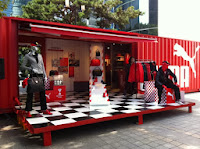The hot topic nowadays is “Big Data” and therefore analytics. This promises to have great potential for Retailers in terms of understanding and interpreting shopper behavior and expectations. Thereby enabling the Retailer to develop a more focused and sharply defined competitive advantage.
But, then are we missing something very important here?
But, then are we missing something very important here?
I think the more important thing especially in the Indian retail scenario is operational excellence and execution focus. However, this does not sound as “cool” and futuristic as “Big Data”. Perhaps this is why I am asked more about “Big Data” and analytics in many of the forums, programs and classes and there is a marked decrease in interest levels when I choose to talk about operational excellence.
Analytics and “Big Data” is essentially about interpreting data. What if the underlying data itself was wrong?
This poster was displayed outside a leading chain of stores recently. Apart from the obvious mistake of printing out the email verbatim and just sticking it on a stand, the entire approach is incorrect and counterproductive.
The bonus points have a cost attached to it in terms of the redemption value, the cost of administering the system, etc. The Retailer has started incurring this cost hoping that capturing the birthday and anniversary details of shopper will create a sales opportunity. The bonus points are a reward or can even be called a bribe to make the shopper share this information with the Retailer.
You can see the level of operational excellence or rather the lack of it in the picture. In this context, how productive and useful is the cost and effort being expended on such initiatives? More importantly, what would be the accuracy of any analytics done on this? Suppose a report was being generated about the shopper participation in this scheme, it will obviously have very poor numbers and the data would be skewed.
Instead, if the Retailer had spent some more in having a better caliber of person who sends out an email with a separate attachment of the poster with the attachment, the impact level improves. Added to that is if the Retailer motivates the staff to implement such initiatives, then the impact and the data coming out of such programs would be far more meaningful.
In such a context is it worth it to spend large sums of money on software and skilled people to mine data and analyze the same?
Take a simpler example of sales data. The cashier tries to scan a product and when they are unable to locate the product code, they scan it using some other product code with the same price to complete the billing. This directly affects the inventory and sales data. H would such a level of data accucy help in any analysis?
At least in the Indian context there exists enormous opportunities for shopper delight and increasing operational productivity which will have a direct impact on the bottom line. Analytics and fascination with “Big Data” is good and should happen but after the operational issues are fixed and execution excellence is a reality.
Click HERE to join the debate about whether Retail analytics should wait for execution excellence.







